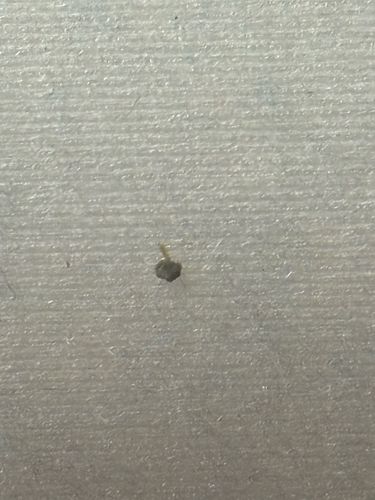Household Casebearer, Plaster Bagworm, or Clothes Moth Larva
Scientific Name: Phereoeca uterella (or other similar case-bearing moths like Tinea pellionella or Tineola bisselliella given the image isn't clear enough for definitive species ID, but P. uterella is a very common 'plaster bagworm' in warmer climates). Given the common appearance, Phereoeca uterella is a strong candidate.
Order & Family: Lepidoptera (moths and butterflies), Tineidae (clothes moths family)
Size: Larvae can grow up to 10-15 mm (0.4-0.6 inches) long, with their case being slightly larger. Adults are small moths, typically around 10-14 mm (0.4-0.55 inches) wingspan.

Natural Habitat
Commonly found indoors in homes and buildings, particularly in areas with high humidity, undisturbed corners, closets, under furniture, or in attics. They are also found outdoors in protected areas like under eaves or in sheltered crevices.
Diet & Feeding
Larvae feed on a wide range of organic materials and keratin-containing substances, including wool, felt, furs, stored food products, silk, synthetic fibers, spiderwebs, and insect remnants. They are generalist scavengers.
Behavior Patterns
Larvae construct a case from silk and debris (like dust, lint, fabric fibers, or sand particles) which they carry with them as they move and grow. They are slow-moving and often prefer dark, undisturbed areas. Adults are poor flyers and are attracted to light.
Risks & Benefits
Potential risks include damage to clothing, carpets, upholstered furniture, and other household items made of natural fibers. They are considered a nuisance pest. There are no known benefits.
Identified on: 9/1/2025